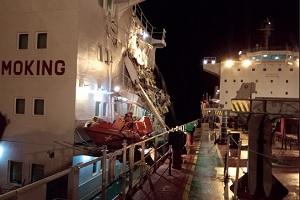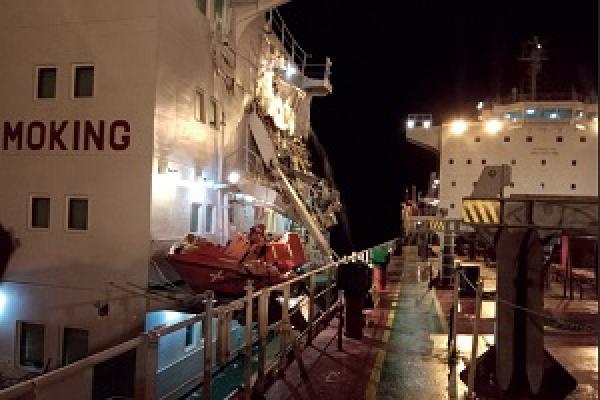
Steamship Mutual
Published: April 27, 2018

The UK’s Marine Accident Investigation Branch (MAIB) has recently published the report of its investigation into the collision between the bulk carrier Huayang Endeavour and the tanker Seafrontier that occurred in the Dover Strait on 1st July 2017.
The circumstances of that collision highlight the risks that can arise through the use of VHF radio communications to determine collision avoidance action. In this case, the Huayang Endeavour was overtaking the Seafrontier on that vessel’s starboard side, and the two ships were on converging courses. The incident occurred in the hours of darkness , and about 12 minutes before the collision, when the vessels were about 1 nautical mile (nm) apart , the Master of the Huayang Endeavour ordered the second officer to contact the Seafrontier to ascertain that vessel’s intentions as the ARPA indicated a CPA of 0.3 nm. Once VHF contact was established and the 2/O of the Huayang Endeavour asked the Seafrontier’s intentions, the Master of the Seafrontier said that he should ask what the Huayang Endeavour’s intentions were as they were overtaking and not keeping clear. The Huayang Endeavour’s 2/O said they would overtake on the Seafrontier’s starboard side. The Seafrontier’s Master said that the Huayang Endeavour should alter course to starboard. He added that since there was another vessel on his port side he was not able to alter his vessel’s heading much to port but could perhaps give the Huayang Endeavour a little more sea room by altering his heading 4-5 degrees to port. That message was acknowledged and the 2/O of the Huayang Endeavour reported to the Master, in Mandarin, his understanding of the call which had been conducted in English and not monitored by the Master. The 2/O reported that the Seafrontier did not wish to be overtaken on its starboard side. The Master of Huayang Endeavour then decided to alter course to port to pass the Seafrontier on that vessel’s port side. Whilst the Huayang Endeavour was commencing its turn to port, the Master of the Seafrontier had become concerned about the close quarters situation that was developing, both with the Huayang Endeavour overtaking to starboard as he thought following the VHF conversation, and with the other vessel that was by then about 0.65nm fine on his port bow. The Master of the Seafrontier then decided that the best way to increase sea room with the vessel on his port bow would be by taking a round turn(360 degrees) to port. As the Seafrontier began swinging to port, a visual check from the port side of the bridge then revealed that the Huayang Endeavour was now on the Seafrontier’s port quarter with its green sidelight clearly visible. Despite various actions on the part of both ships the vessels collided with the starboard bow of the Huayang Endeavour contacting the port side accommodation of the Seafrontier.
Full details of the casualty are contained in the MAIB’s Serious Marine Casualty Report No. 7/2018 which can be found at the following link:
This report illustrates clearly the risk of misunderstanding that can arise from VHF conversations, and particularly when English is not the first language of one or more of the participants. Similar scope for misunderstanding and increased risk of collision can be seen from the UK MAIB’s Serious Marine Casualty Report No. 11/2014 on the collision between CMA CGM Florida and Chou Shan, and the Bahamas Maritime Authority report on the collision between the Baltic Ace and Corvus J. Both of these reports can be found at the following links:
http://www.bahamasmaritime.com/wp-content/uploads/2016/05/Baltic-Ace-TJ-REPORT-20160527-FINAL.pdf
Members are strongly recommended to distribute these reports to their Masters and officers.


